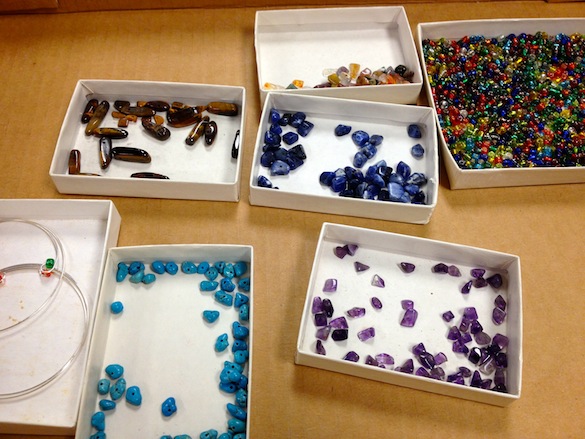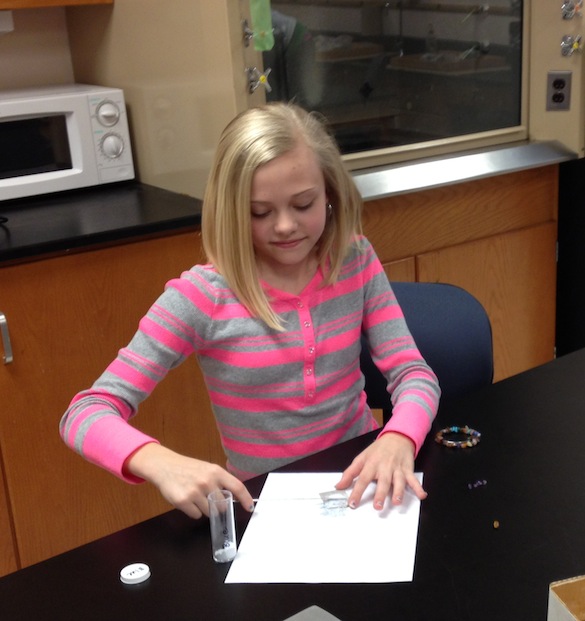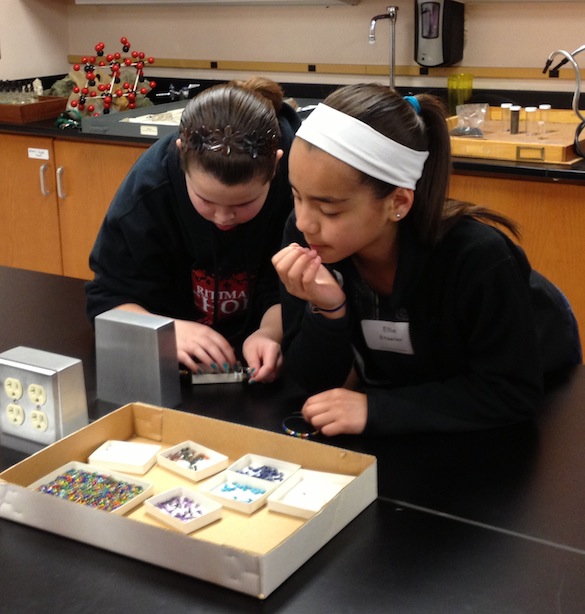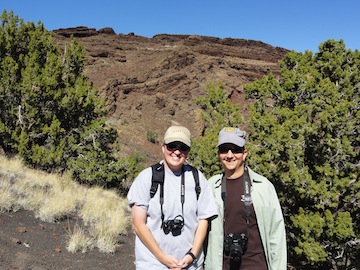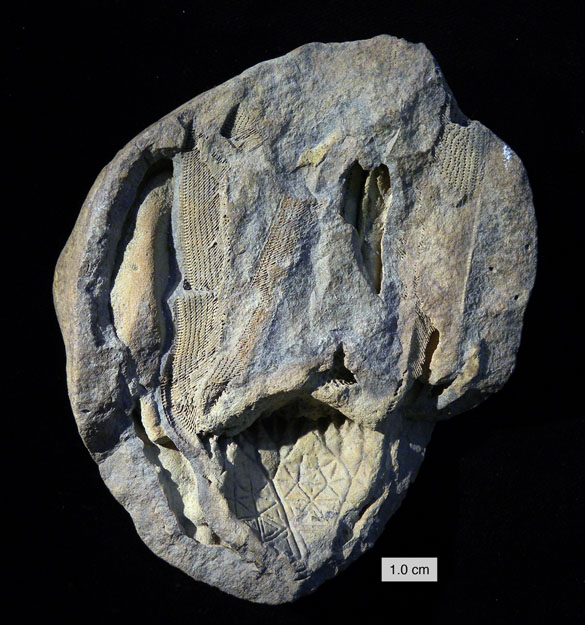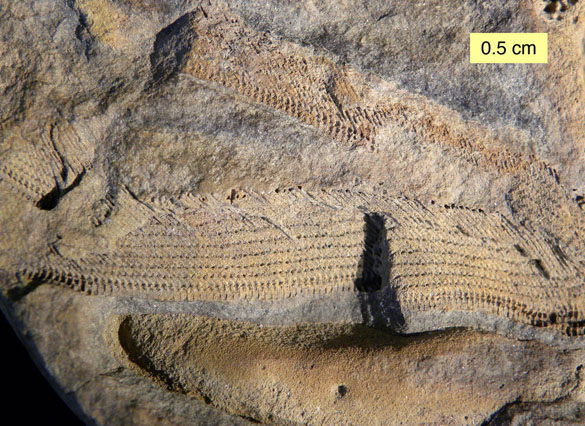 Most people have seen this fossil fish type. Geologists, in fact, have probably seen Knightia eocaena Jordan, 1907, thousands of times. It is present in nearly every gift shop that sells fossils, usually as small plaques or glued to refrigerator magnets. It is the state fossil of Wyoming and, by all accounts, the most numerous fossil fish in the world. In fact, it is likely the most common vertebrate fossil ever. It is thus no surprise that Wooster has dozens of specimens, most of them donated by students and alumni.
Most people have seen this fossil fish type. Geologists, in fact, have probably seen Knightia eocaena Jordan, 1907, thousands of times. It is present in nearly every gift shop that sells fossils, usually as small plaques or glued to refrigerator magnets. It is the state fossil of Wyoming and, by all accounts, the most numerous fossil fish in the world. In fact, it is likely the most common vertebrate fossil ever. It is thus no surprise that Wooster has dozens of specimens, most of them donated by students and alumni.
Knightia lived in freshwater lakes throughout western North America during the Eocene. It is closely related to herring and sardines, and almost certainly had similar life habits. We know that it lived in large schools, and we suspect it had a diet of phytoplankton and insect larvae. It was low on the ecological food chain, just like its modern cousins, and so was an important food source for all sorts of larger fish, reptiles, birds and mammals.
 We tend to see most often beautifully preserved, complete Knightia specimens like the one at the top of the page. This is because if a fossil is very common, collectors can afford to keep only the best specimens. It is fun, though, to see what the average Knightia looks like in the fossil record. Above is a specimen collected by our petrologist Meagen Pollock from an outcrop in Wyoming. Note that the fish are contorted and often overlapping — specimens that are usually discarded by collectors. This slab shows better that these fossils occur in vast, complicated, messy death assemblages, probably because of volcanic ash falls or quick changes in lake chemistry.
We tend to see most often beautifully preserved, complete Knightia specimens like the one at the top of the page. This is because if a fossil is very common, collectors can afford to keep only the best specimens. It is fun, though, to see what the average Knightia looks like in the fossil record. Above is a specimen collected by our petrologist Meagen Pollock from an outcrop in Wyoming. Note that the fish are contorted and often overlapping — specimens that are usually discarded by collectors. This slab shows better that these fossils occur in vast, complicated, messy death assemblages, probably because of volcanic ash falls or quick changes in lake chemistry.
 This is a digital reconstruction of Knightia (© N. Tamura). Note the deeply forked tail and flattened top of the head.
This is a digital reconstruction of Knightia (© N. Tamura). Note the deeply forked tail and flattened top of the head.
 Knightia was named in 1907 by the accomplished and very problematic David Starr Jordan (1851-1931). Jordan was a well known fish expert, having been inspired by the iconic ichthyologist Louis Agassiz himself. He taught at several colleges and universities, eventually serving as president of Indiana University (at 34, the youngest university president at the time) and as the first president of Stanford University. He was a very successful university president, especially in the first years of Stanford.
Knightia was named in 1907 by the accomplished and very problematic David Starr Jordan (1851-1931). Jordan was a well known fish expert, having been inspired by the iconic ichthyologist Louis Agassiz himself. He taught at several colleges and universities, eventually serving as president of Indiana University (at 34, the youngest university president at the time) and as the first president of Stanford University. He was a very successful university president, especially in the first years of Stanford.
But, but … David Starr Jordan was also a eugenicist, believing in compulsory sterilization of the “unfit”. On the bright side (if there is one here), he opposed war because it tended to kill the most fit members of society. Jordan also shockingly covered up the apparent murder of Jane Stanford, co-founder of the university, in 1905. Jordan does not look good at all in that story, most of which was sorted out only about ten years ago. Who would have guessed that a murder mystery could lurk in the taxonomic history of these pretty little fish?
References:
Grande, L. 1982. A revision of the fossil genus Knightia, with a description of a new genus from the Green River Formation (Teleostei, Clupeidae). American Museum Novitates 2731: 1-22.
Jordan, D.S. 1907. The fossil fishes of California; with supplementary notes on other species of extinct fishes. Bulletin, Department of Geology, University of California 5:136.



